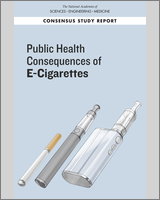From: Summary

NCBI Bookshelf. A service of the National Library of Medicine, National Institutes of Health.
Conclusive evidence: There are many supportive findings from good-quality controlled studies (including randomized and non-randomized controlled trials) with no credible opposing findings. A firm conclusion can be made, and the limitations to the evidence, including chance, bias, and confounding factors, can be ruled out with reasonable confidence.
Substantial evidence: There are several supportive findings from good-quality observational studies or controlled trials with few or no credible opposing findings. A firm conclusion can be made, but minor limitations, including chance, bias, and confounding factors, cannot be ruled out with reasonable confidence.
Moderate evidence: There are several supportive findings from fair-quality studies with few or no credible opposing findings. A general conclusion can be made, but limitations, including chance, bias, and confounding factors, cannot be ruled out with reasonable confidence.
Limited evidence: There are supportive findings from fair-quality studies or mixed findings with most favoring one conclusion. A conclusion can be made, but there is significant uncertainty due to chance, bias, and confounding factors.
Insufficient evidence: There are mixed findings or a single poor study. No conclusion can be made because of substantial uncertainty due to chance, bias, and confounding factors.
No available evidence: There are no available studies; health endpoint has not been studied at all. No conclusion can be made.
From: Summary

NCBI Bookshelf. A service of the National Library of Medicine, National Institutes of Health.